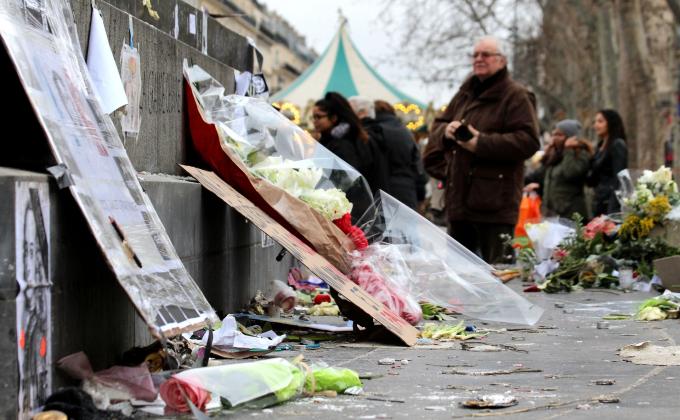Since 9/11 and the London and Madrid bombings a wide variety counter-terrorism measures have been taken, including the implementation of many technical tools. Across Europe, public authorities have invested in visual surveillance such as Closed-Circuit Television ("CCTV") cameras as well as recognition technologies. In the United Kingdom, for instance, the average person is caught on CCTV 300 times each day and at Schiphol Airport in the Netherlands there are 1.350 surveillance cameras. Despite the fact that surveillance cameras are assumed to be a powerful tool, their effect is far from clear. According to a meta-analysis by Welsh and Farrington (2011) the effectiveness of CCTV in preventing crime in public areas is modest. Furthermore visual surveillance can impact human rights such as the right to privacy and data protection. Citing the threat of terrorism, public authorities legitimise the collection and storage of digital records of almost every move or transaction of all citizens. This could be deemed an intrusion of people’s personal lives as well as a disproportionate response to countering terrorism. There is also the risk of the misuse and abuse of surveillance camera images.
On another level the increased reliance on surveillance cameras relates to the development of the "surveillance society" in which there is extensive collection, recording, storage, analysis and application of information of individuals and groups as they go about their lives. This affects everybody. People and communities run the risk of being associated with terrorism. For instance, Choudhury, Tufyal and Fenwick (2010) evaluated the effects of surveillance cameras, which were funded by a counterterrorism stream, on Muslim majority communities in Birmingham and concluded that their deployment had a serious impact on the relationship between local authorities and minority communities. They argued that it could lead to members of the population doubting the legitimacy of the visual surveillance measure, which eventually could result in ‘significant community anger and lose of trust’.
Henceforth civil society activists fear that surveillance cameras contribute to a society where surveillance by public authorities is prevalent. These concerns could be addressed by focussing on accountability, which implies that authorities are held accountable for their laws, regulations, policies, budgets and actions. Accountability as defined by Ackerman (2005) entails a “proactive process by which public officials inform about and justify their plans of action, their behaviors and results, and are sanctioned accordingly”. This is both external, for example through oversight committees, and internal, for instance through dialogue, explanation and justification. By periodically assessing the use of surveillance cameras in the fight against terrorism, public authorities are held accountable in a proportionate and effective manner.
On an international level the former United Nations Special Rapporteur, Martin Scheinin, "on the promotion and protection of human rights and fundamental freedoms while countering terror" has highlighted the erosion of the rights to privacy and data protection by visual surveillance. According to Scheinin the increased use of surveillance powers and technologies lack adequate legal safeguard. Hence, in order to minimise harm and breaches of human rights as a result of the expanded surveillance systems legal safeguards and effective oversight is required. In relation to this call for more accountability the Special Rapporteur is concerned about the lack of effective and independent scrutiny.
Also the Council of Europe’s Venice Commission stresses that human rights restrictions by video surveillance of public areas should be based on international human rights law criteria of legal prescription, necessity and proportionality and justified by the prevention of disorder or crime or to protect national security. This scrutiny is considered an important way in which public authorities are held accountable. Additional requirements are transparency about funding, the public notification of people in public places by, for instance, street signs, data protection and access to personal data. In addition to reconfirming the aforementioned human rights law criteria, the European Charter “Citizens, Cities and Video-Surveillance” highlights the principle of accountability, citizen participation and independent oversight for the use of CCTV. Thus on the international level there are clear emerging criteria for accountability for the use of surveillance cameras.
Recently, the terrorist attacks in Norway have highlighted that the threat of terrorism continues to be real within Europe. The attack could further strengthen public support for counter-terrorism measures. Yet to guarantee public legitimacy in the long run, there should be a public debate and evaluation about particular measures, including the use of surveillance cameras. When public authorities use visual surveillance in an excessive or arbitrary fashion, it contributes to a society where surveillance is permanent. This alienates the public and, probably, reduces opportunities for effective co-operation between authorities, communities and individual citizens – which is particularly needed when trying to prevent attacks by lone operators like Anders Breivik. Public authorities should periodically assess the use of surveillance cameras, especially if their use was largely justified on the basis of fighting terrorism. Furthermore, the reviews should be primarily based on internationally established human rights criteria of law, necessity, proportionality and effectiveness. Although surveillance cameras could be a valuable tool in countering terrorism, this requires adequate checks and balances.
This commentary is based on Eijkman, Q.A.M. & Weggemans, D. (2011), ‘Visual Surveillance and the Prevention of Terrorism: What about the checks and balances?’, International Review of Law Computers and Technology, Vol.25, No.2, pp.143-150.








